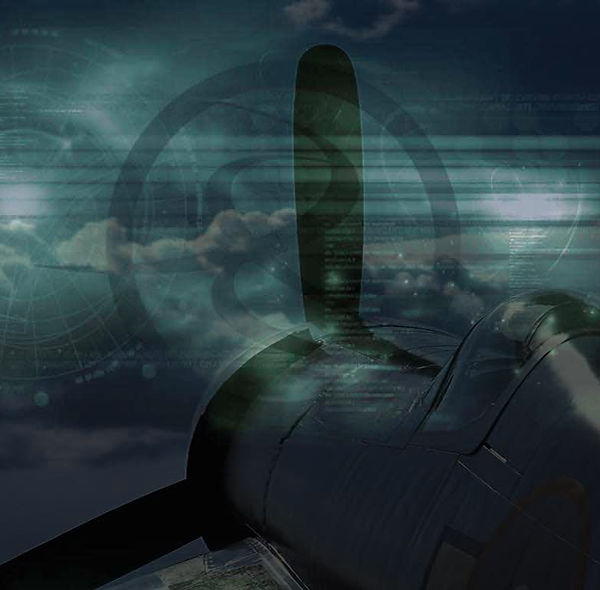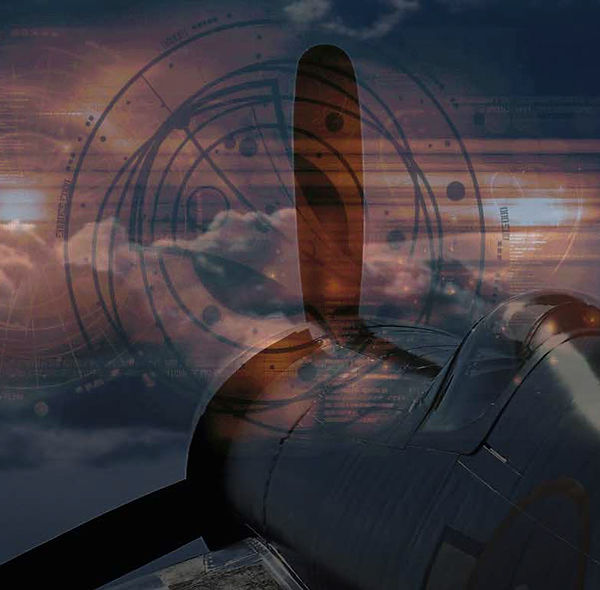
Hold your pointer on a tab in the menu on top of the page to view and handle the sub menus.



ROYAL NAVY CORSAIR Mk (*)
Corsair Mk I :Fleet Air Arm designation of F4U-1
Corsair Mk II : Fleet Air Arm designation of F4U-1A
Corsair Mk III : Fleet Air Arm designation of F3A-1D
Corsair Mk IV : Fleet Air Arm designation of FG-1D
Introduction
The Royal Navy received 2012 Corsairs. It was the fleet air arm that first used the Corsair from a carrier. Ironically for an aircraft that made its name in the Pacific, the Corsair’s first carrier action came in the North Sea. On 2 April 1944, Corsairs of No. 1834 squadron, based on H.M.S. Victorious took part in an attack on the German battleship Tirpitz, providing fighter cover. Further strikes against the Tirpitz followed in July and August, this time supported by 1842 squadron.
The Royal Navy received 95 F4U-1s (designating them as Corsair Is) and 510 F4U-1As (Corsair II) from Chance Vought production. They also received 430 Brewster produced F3A-1Ds (Corsair III) – just over half of the Brewster company's total production of Corsairs, and 977 Goodyear produced FG-1Ds (Corsair IV). If the war had continued in 1946, F4U-4Bs were allocated for the Fleet Air Arm, but were never delivered.
Despite their early European venture, the British Corsairs spent most of the war in the Indian and Pacific oceans. They entered British service just as the fleet returned to the Indian ocean in strength, and took part in strikes against Japanese targets in Burma and Sumatra, including the oil refineries at Palembang. In 1945 the British fleet carriers moved to the Pacific, to take part in the final attack on Japan. British Corsairs saw action against Kamikaze attacks as the British Pacific Fleet attacked the Sakishima Islands, at the southern tip of Japan, before finishing the war making attacks on the Tokyo area.
Fleet Air Arm (FAA) of the Royal Navy - History
During the expansion of the Royal Navy's Fleet Air Arm in World War 2, many units formed in the United States, where they took delivery of American naval aircraft under the Lend-Lease aid programme to the British Empire. Fleet Air Arm and United States Navy aircraft flew side by side on combat missions over enemy territory and the Royal Navy and US Navy operated together in the Coral Seas, Indian Ocean, Pacific, Mediterranean and Atlantic. Royal Navy crews manned escort carriers built in the US and given to the UK by the American Government under Lend-Lease.
The Fleet Air Arm accounting base in the USA was at Washington DC, and it was commissioned in the Royal Navy as HMS Saker on 1 October 1941, finally being payed off in 1948. The US Navy base at Lewiston, Maine was commissioned under HMS Saker in 1943, and acted as the parent ship for all Fleet Air Arm facilities in the USA until payed off 1945.
The F4U Corsair became the subject for a lend-lease deal between the British and American governments. 2012 Corsairs were produced ( F4U-1A Corsair I and II- Chance Vought (United Aircraft Corporation division),F3A-1 Corsair III - Brewster Aeronautical Corporation ,FG-1D Corsair IV - Goodyear Aircraft Corporation) , divided into four marks (F4U-1A Corsair I (Mk.I), F4U-1A Corsair II (Mk.II), F3A-1 Corsair III (Mk.III) , FG-1A Corsair IV (Mk.IV)), were utilized by the Fleet Air Arm (FAA) of the Royal Navy, which gave the aircraft the fact of being the most populous US plane to see service with the Royal Navy in World War 2. Under the Lend-Lease agreement, the UK took delivery of 95 F4U-1s (designated Corsair MkI) and 510 F4U-1As (as Corsair MkII) which commenced in June 1943, after delivery of the first aircraft in May 1943 to the British Admiralty Delegation at US Floyd Bennet Field, New York, USA (JT102). The first unit to receive the Corsair was 1835 squadron at Quonset Point, USA in August 1943.
The majority of the Corsairs were delivered to Royal Navy Establishments in North America and then transported to the UK. Typical of the aircraft transport were the Corsairs allocated to1841 and 1842 squadrons in April 1944 at Brunswick. Thence transported to Norfolk, Virginia, emabrking on HMS Ruler April 1944 where they were transported to Liverpool onwards, or from Brooklyn NY to HMS Ruler in May 1944 for transport to Liverpool June 1944. The pattern of equiping FAA squadrons was gatherig pace, with 1846 sqdn in August 1944, following deck-landing on USS Charger May-August 1944 (eg JS612) and transporting of Corsairs to the UK with aircraft embarking on HMS Puncher for ferrying to the UK August 1944 (eg 1845 sqdn JS834), or from Norfolk, Va, USA in October 1944 to HMS Ruler and arriving in Greenock November 1944. Thence the aircraft transferred from Lockheed Renfrew to 23 MU December 1944-January 1945.
In 1944 FAA Corsair units had almost a year's experience, as well as having seen combat from carriers in both Europe and the Pacific since April 1944.
Never fazed by the aircraft's reputation, the British went about re-equipping with the Corsair Mk.I from mid-1943 onwards and squadrons were trained for carriers operations.
Modifications to the F4U included the clipping of the wings by eight inches due to the smaller confines of the hangar decks on British carriers. This change in span brought with it the unexpected bonus of improved sink rate, and so partially eradicating the aircraft's propensity for floating in the final stages of landing .
Home and Far East fleets :
By early 1944 eight units had been dedicated for carrier operations with both the Home and Far East fleets, this would reach 18 units by V-Day. The original F4U-1, known as the Corsair I with 95 delivered but none of these ever saw combat. An anglicized version of the F4U-1A, known as the Corsair Mk.II was delivered, 510 were produced. Modifications were complete by the end of 1943, and the Corsair II was loaded aboard escort carriers for shipment to Britain .
By April 1944 the Home Fleet felt confident enough to enter the Corsair Mk.lI in combat, and 28 aircraft from the 1834 and 1836 Squadrons of HMS Victorious's air wing duly provided top cover on the 3rd of April 1944 as No 47 Naval Fighter Wing (FW) for Operation Tungsten an air strike by six carriers on the German battleship Tirpitz at Kaajford, Iceland.The Corsair's were acting as a fighter escort to the Barracuda's assigned the task of attacking. The Corsair pilots encountered no enemy aircraft during the raid, and returned to the carrier without any losses.
The Corsair's contribution to the war against Germany was restricted to supporting Home Fleet strikes against this target through to August.
Combat in the Indian Ocean :
The Corsair's combat debut in the Indian Ocean took place in April 1944, Numbers 1830 and 1833 Squadrons, who formed No 15 FW aboard HMS Illustrious, were used to sweep the area clean east of Ceylon, and although little real combat was met, it did give the FAA a chance to operate with the USS Saratoga of the US Navy.
The Corsair force in theatre effectively doubled in July with the arrival of the Victorious.Number 1837 Squadron also arrived in Ceylon to join the Illustrious, increasing the embarked strength per vessel to 42 Corsair II each, split evenly between a trio of units. This enlarged force got the chance to show its worth on 25 July when Sabang Island was hit. The Corsair Mk.II had an aerial combat whith a handful of enemy aircraft attempted to attack the warships. Squadron 1830 and Squadron 1833 downed 6 Japanese aircraft. The Victorious scored one kill, which was destroyed by a Corsair II from the temporarily assigned Squadron 1838. Aside from being the FAA's first of nearly 50 kills in the Corsair, these successes were also the first deck-based victories for the fighter. Mk.II had an aerial combat whith a handful of enemy aircraft attempted to attack the warships. Squadron 1830 and Squadron 1833 downed 6 Japanese aircraft. The Victorious scored one kill, which was destroyed by a Corsair II from the temporarily assigned Squadron 1838. Aside from being the FAA's first of nearly 50 kills in the Corsair, these successes were also the first deck-based victories for the fighter.
Corsair pilots again encountered the enemy in the skies over the Car Nicobar Islands in October 1944, although this time only Victorious's units used the Corsair. A handful of Oscars defending the islands were downed in the duels that took place.
One last operation was performed by the Corsair in this theatre on 4 January 1945 when Victorious operated in support of the strike on the refinery at Pangkalan Brandan, again on Sumatra . The pilots of No 47 FW were asked with providing top cover for the Avengers. Corsair pilots downed 7 enemy planes.
Creation of the British Pacific Fleet (BPF) :
With the creation of the British Pacific Fleet (BPF) in January 1945, the Royal Navy moved its force to Sydney .
The operation Codenamed “ Meridian One and Two”, planned since early December 1944 , was executed by four large fleet carriers to hit the refinery at Pladjoe, near Palembang in Sumatra . Therefore 144 sorties were launched on 24 January, followed by more raids five days later.
This attack was the second largest force put up by the FAA in World War 2. Included in the first strike were 32 Corsairs from Illustrious and Victorious, performing bomber escort duties, and a further 24 on a sweep of the local airfields. 5 Corsairs were lost, but 34 Japanese aircraft were destroyed on the ground.
BPF joined forces with the US Fifth Fleet :
After Sydney , the BPF joined forces with the US Fifth Fleet to form Task Force 57, and of the 270 FAA aircraft, split between five carriers, contributed to the force , 110 of them were Corsairs. The battle for Okinawa , codenamed “Iceberg”, was the BPF's first Pacific combat, and commencing 26 March strikes were launched against Sakishima Gunto. Aside from flak suppression and strike work, Corsair units were kept busy catching kamikazes. 10 Japanese aircraft were claimed by Corsairs during these attacks, which lasted till mid-April, split evenly between Victorious and Illustrious. Entering the battle once again on 4 May, the BPF Corsairs intercepted a formation of 20 assorted enemy aircraft as they attacked the carrier force.
After a month of strikes the defenders of Okinawa were beaten, much damage had been done on Task Force 57's carriers, two-thirds of the 270 aircraft dispatched from Sydney had been destroyed or damaged, a large percentage through kamikaze attacks. The carriers returned to the war zone for the last time in July, with Corsair units employed on strikes on airfields as all aerial opposition had stopped. Only two more kills were scored prior to V-Day.
Of the 18 squadrons eventually equipped with the Corsair, 8 saw combat. Only 2 of the four marks ( Mk.I and Mk.II ) operated by the FAA were used in action, and of the 2012 received, roughly 40 remained in service until August 1946.Aircraft of the first delivery were still serving with 768 sqdn at Ballyhalbert in December 1945, others finally delivered to Renfrew in January 1946 for dumping at sea (eg JS548). The last of the wartime delivered aircraft, KD647, served with 721 squadron at Kai Tak until September 1947.
(*) : Index - References - Notes - Citations